Tagged With ‘2015’
Lalique
Encre Noire à l’Extrême
18 November, 2016
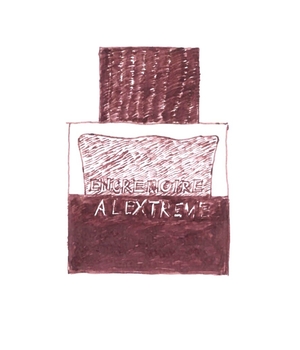 Lalique has been associated with perfume since 1907, when its founder, René Lalique, began to produce alluring glass bottles for the prodigiously entrepreneurial French perfumer François Coty. But it wasn’t until 1992 that the company launched a perfume of its own with Lalique de Lalique.
Lalique has been associated with perfume since 1907, when its founder, René Lalique, began to produce alluring glass bottles for the prodigiously entrepreneurial French perfumer François Coty. But it wasn’t until 1992 that the company launched a perfume of its own with Lalique de Lalique.
Encre Noire – literally ‘black ink’ – was released in 2006, and was quickly hailed as one of the best vetiver scents around. Created by the talented perfumer Nathalie Lorson from the Swiss fragrance-and-flavour firm Firmenich, it blends good-quality vetiver (whose earthy, slightly bitter smell comes from the roots of a tropical grass) with the woody notes of cypress and a long-lasting synthetic called Cashmeran, whose effect is as plush as its name.
Though Encre Noire is still available, and presumably a steady seller, Lalique has celebrated its 10th anniversary by launching a slightly more powerful, punchy version called Encre Noire à l’Extrême. Created again by Nathalie Lorson, the new perfume blends two different vetivers, one from Haiti and the from Java, and adds touches of iris, incense, sandalwood and patchouli.
If rather stronger and heavier than the earlier Encre Noire, it’s still a very attractive fragrance, and while Lalique claims that Encre Nore à l’Extrême ‘redefines masculinity’, we feel that it would smell equally appealing on a man or a woman. Think ink.
Elie Saab
Essence No 6: Vetiver
29 November, 2015
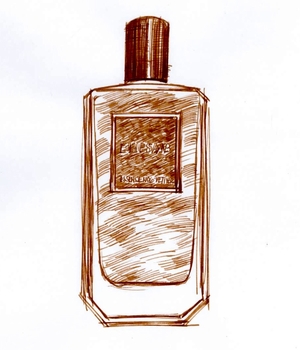 Is it just me, or would you be more impressed if a successful fashion designer decided not to do a perfume range than decided to do one? But there we are: perfume and fashion have gone together since the days of Paul Poiret, and you can’t blame Elie Saab from joining the crowd.
Is it just me, or would you be more impressed if a successful fashion designer decided not to do a perfume range than decided to do one? But there we are: perfume and fashion have gone together since the days of Paul Poiret, and you can’t blame Elie Saab from joining the crowd.
Actually perhaps that’s a bit unfair, as Saab’s new perfume, Essence No 6: Vetiver, is a really fine unisex fragrance, cleverly balancing the slightly damp earthiness of vetiver with the woody, floral scent of violet and herbal lavender.
There again maybe I shouldn’t have been surprised, as like all of Saab’s fragrances, Vetiver is the work of Francis Kurkdjian, who is now arguably the leading perfumer of his generation. French-born Kurkdjian sprang to fame at the age of 26 when he created Le Male for Jean-Paul Gaultier, and he has gone on to launch a stream of commercial hits, from Armani Mania to My Burberry. Yet he’s remained a highly creative perfumer, with his own excellently packaged Maison Francis Kurkdjian line.
In 2010 Saab signed a ten-year deal with Beauté Prestige International, one of the big perfume licensing companies (which in turn is owned by Shiseido), and the first Elie Saab perfume came out the following year. The Essences range was launched in August 2014, and Essence No6: Vetiver is the latest addition, along with Essence No7: Neroli (funnily enough there isn’t an Essence No5 in the range, presumably for Chanel-related reasons).
Vetiver has long been one of the most popular ingredients in perfumery, particularly in men’s perfumes. It’s not hard to understand why: the dried roots of this tropical grass have a wonderfully earthy, sexy, slightly bitter smell. You could probably use good-quality vetiver oil as a scent in its own right, but understandably enough, creative perfumers enjoy the challenge of combining it with other ingredients to bring out its specific qualities. In Guerlain’s classic Vétiver, for example, it’s combined with the lemony citrus smells you’d expect to find in a men’s cologne.
For Essence No6: Vetiver, perfumer Francis Kurkdjian has done something a bit different, by softening the earthy vetiver with the gentler, less abrasive scents of lavender, cloves, geranium and bergamot orange. Together they give Essence No6 a gentle touch of fruit, and even a hint of chocolate, though vetiver remains the star of the show. The result is deliciously rich and rounded, and you can really sense the quality of the ingredients. The chunky glass bottle, too, has an appealing weight to it, helped by the attractively unfussy, rather retro design, like a men’s after-shave from the 1930s. Perfect for wearing every day.
Hermès
Equipage Géranium
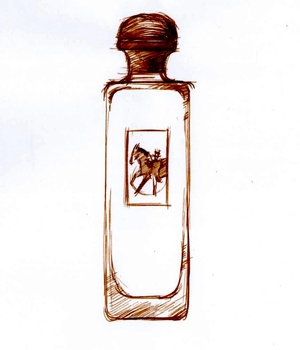 Equipage is such a classic perfume that it’s tempting to ask why anyone would mess with it, but that’s a bit like wondering why anyone would want to reinterpret the Beatles’ original version of Yesterday.
Equipage is such a classic perfume that it’s tempting to ask why anyone would mess with it, but that’s a bit like wondering why anyone would want to reinterpret the Beatles’ original version of Yesterday.
Created by the perfumer Guy Robert and launched in 1970, Equipage was the first Hermès perfume to be designed specifically for men, and Robert composed a rich, subtly spicy scent which includes – among many other things – bergamot orange, jasmine, lily of the valley and clove-scented carnations.
Forty-five years on, the company’s in-house perfumer, Jean-Claude Ellena, has revisited three of its classics, in each case pairing them with a new ingredient. First came Bel Ami Vétiver, followed by Rose Amazone, and now we have his updated version of Equipage – Equipage Géranium.
If Ellena’s attempt to give Equipage a modern twist isn’t (to my nose at least) entirely successful, his choice of geranium (or pelargonium, to be botanically correct) as a new ingredient is a typically clever and imaginative one. Though the leaves of different species of pelargonium smell of everything from lemon to cinnamon, most of the so-called geranium oil used in perfumery comes from a single South African species, Pelargonium graveolens. As with all natural ingredients, geranium oil comes in a range of different grades, but they generally share a fresh, slightly sharp smell that’s usually described as both fruity and minty, often with a hint of rose.
I’m guessing that it was the fresh, minty element of geranium oil that appealed to Jean-Claude Ellena, and Equipage Géranium does smell a tiny bit fresher and sharper than the original Equipage – but it’s a subtle twist rather than a radical reinvention. I’m not sure it’s sufficiently different to make it worth choosing over the original, but unlike many of Ellena’s perfumes, which are always refined but sometimes stripped down until they’re slightly colourless, Equipage Géranium retains all the richness and complexity of its inspiration. Given the crude simplicity of so many modern scents, that’s a quality to be celebrated.
Edition Perfumes
On the Road
26 November, 2015
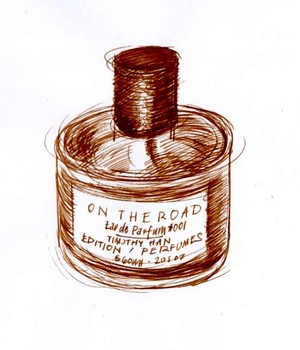 Since it was published in 1957, Jack Kerouac’s amphetamine-fuelled road-and-head-trip of a novel has inspired generations of would-be counter-culturalists to take off into the unknown, but until now, it has never inspired a perfume.
Since it was published in 1957, Jack Kerouac’s amphetamine-fuelled road-and-head-trip of a novel has inspired generations of would-be counter-culturalists to take off into the unknown, but until now, it has never inspired a perfume.
On the Road is only the second scent from East London-based Edition Perfumes, aka perfumer Timothy Han, but it follows in the literary footsteps of his first fragrance, She Came to Stay. Inspired by Simone de Beauvoir’s 1943 novel L’Invitée, She Came to Stay went on to be a best-seller for legendary London fashion boutique Browns.
Taking the plotline of Kerouac’s novel as its starting point, On the Road is one of those rare things in contemporary fragrance: a scent whose story unfolds on the skin – unlike so many recent perfumes, which continue to smell boringly identical from first spritz to final dreary gasp.
As Han describes his perfume, ‘it begins with smoky notes of benzoin and birch reminiscent of the hot asphalt and grittiness of New York City. Punctuated by forays into tobacco-filled bars where a new era in music is being defined by the jazz greats, our journey takes us through the openness of the dusty cornfields of a Mid-Western America and rises to the cedar forests of a Pacific Coast. The restlessness of the journey finally gives way to the optimism left by the fresh green fragrance of galbanum, citrus and bergamot.’
That is quite a lot to squeeze in to a 60ml bottle of perfume, but what we like about On the Road is that it really does develop in the hours after first spraying it on your wrist. Its initial burst of smoke and whisky gradually evolves into a very pleasing, long-lasting woody vetiver. It’s a fine piece of work, and all the more impressive given the quality of the design and packaging – though perhaps that’s less surprising once you learn that Han started his career as an assistant to John Galliano.
Though Han develops and makes his fragrances in his Dalston studio himself, he sees his work very much as a collaborative effort, and for On the Road he’s keen to mention hot young chefs Olia Hercules and Oliver Rowe, Hixter bartender James Randall and model Olivia Inge, without whom its launch, in Han’s words, ‘would have been a no-go’.
But perhaps the biggest shout should go out to the ebullient London artist Cedric Christie, whose photographs from a train trip he took from New Orleans to New York add an authentically On the Road-ish touch to the perfume boxes. Buyers get to choose from five different pictures, adding an extra layer of depth and desirability to the scent. All in all it’s a great launch, and I’m very much looking forward to Timothy Han’s next novel in a bottle.
Heeley
Phoenicia
24 August, 2015
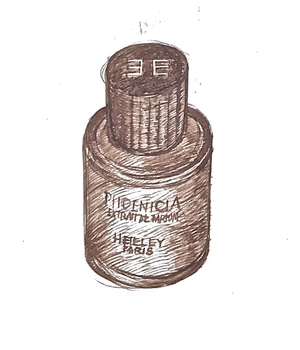 Though there’s some dispute about its exact origins, the word ‘perfume’ most likely derives from ‘fumes from a substance being burned’, so you could say that Phoenicia, the latest fragrance from Yorkshire-born, Brussels-based perfumer James Heeley goes back to perfume’s roots.
Though there’s some dispute about its exact origins, the word ‘perfume’ most likely derives from ‘fumes from a substance being burned’, so you could say that Phoenicia, the latest fragrance from Yorkshire-born, Brussels-based perfumer James Heeley goes back to perfume’s roots.
The name refers to the ancient civilisation that flourished in the eastern Mediterranean around 1000BC, but Phoenicia’s smell is instantly evocative of childhood bonfires, just as his earlier L’Amandière evokes an almond orchard in spring.
‘I loved the way my hair smelled after a bonfire,’ Heeley recalls, and he’s captured the memory using a mixture of cedarwood, oud, smoky birchwood and vetiver.
Luckily there’s more to Phoenicia than smoke. ‘I’ve always loved the concrete of labdanum ciste,’ Heeley says (the densest refined extract from the fragrant Mediterranean shrub Cistus ladanifer), ‘which has a slight smell of dates or prunes.’ Adding this to the formula gives Phoenicia an attractive hint of dried-fruit sweetness, which balances the smokiness is a very attractive way. It certainly lights my fire.
Aesop
Tacit
21 August, 2015
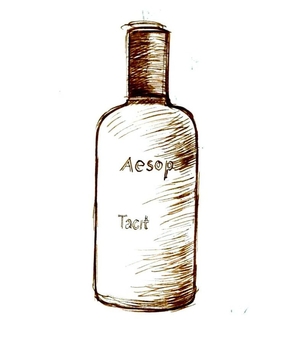 Launching worldwide in September, Tacit will only be Aesop’s second perfume (if you don’t count the long-discontinued Marrakech and Mystra), but this being Aesop there won’t be lots of razzmatazz. Everyone’s favourite Australian skincare brand likes to do things quietly, and Tacit – which means what’s left unsaid – captures the essence of Aesop pretty well.
Launching worldwide in September, Tacit will only be Aesop’s second perfume (if you don’t count the long-discontinued Marrakech and Mystra), but this being Aesop there won’t be lots of razzmatazz. Everyone’s favourite Australian skincare brand likes to do things quietly, and Tacit – which means what’s left unsaid – captures the essence of Aesop pretty well.
Created by New York-based International Flavors & Fragrances perfumer Céline Barel, Tacit is a subdued take on a classic eau de cologne, though with the grapefruit-like Japanese yuzu replacing eau de cologne’s usual lemony opening, and basil leaves taking the place of rosemary and lavender in its herbaceous heart.
The result is a fresh, unsweetened unisex scent, with a touch of the sour vermouth dryness of Haitian vetiver, extracted from the root of a tropical grass. But this is no ordinary vetiver: instead Barel has used IFF-LMR’s trademarked Vetiver Heart – a cleverly smoothed-out version of traditional vetiver oil, using hydro distillation followed by fractional distillation to extract its usual earthy smell, leaving its slightly bitter dryness intact.
Tacit comes as a 50ml Eau de Parfum (the fragrance industry’s slightly vague term for a solution containing around 10-20 per cent pure perfume) in Aesop’s standard brown glass bottles, but despite the concentration it doesn’t outstay its welcome; in fact personally I’d like it to last a bit longer. The packaging is rather more extravagant: a slim card box decorated by Australian artist Jonathan McCabe, which nestles inside a chunkier brown box, lidded with a card, which in turn slides inside a brown card sleeve.
Tacit is unlikely to turn heads on the street, but that’s not what Aesop’s about: it’s sexy but well-mannered and discreet, which pretty much sums up the brand.
Hermès
Le Jardin de Monsieur Li
4 March, 2015
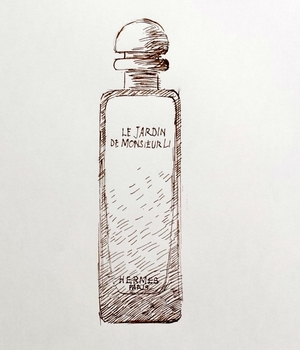 The latest addition to the ‘Jardin’ range of perfumes from Hermès takes China as its inspiration, though apparently the original intention was to develop a fragrance inspired by English gardens. Sadly it seems that Jean-Claude Ellena, the company’s starry in-house perfumer, found the idea too conventional and boring, responding to the suggestion with words to the effect of ‘who wants to smell another rose garden?’
The latest addition to the ‘Jardin’ range of perfumes from Hermès takes China as its inspiration, though apparently the original intention was to develop a fragrance inspired by English gardens. Sadly it seems that Jean-Claude Ellena, the company’s starry in-house perfumer, found the idea too conventional and boring, responding to the suggestion with words to the effect of ‘who wants to smell another rose garden?’
If that’s true I think it’s a shame, since English gardens are some of the most varied and imaginative in the world, and I’d have loved to get the chance to show Ellena the all-green garden at Rousham, say, or the vast yew terraces of Powis Castle. Then again, perhaps he simply fancied travelling somewhere more exotic than could be reached within the limits of a day-trip on the Eurostar.
Either way, Chinese gardens, with their long and literary history, offer rich material for a creative perfumer, and it can’t hurt that China is a vast and expanding market for luxury brands, as attested by Hermès’ sumptuous new store in Shanghai.
Though the Monsieur Li of the title is imaginary, Ellena’s visits to Chinese gardens were made with the Chinese painter Li Xin, who moved from Beijing to Paris in 2002 and whose work forms a perfect counterpoint to Ellena’s: subtly sophisticated abstract ‘landscapes’ in washes of ink on creased rice-paper, one of which decorates the box for Le Jardin de Monsieur Li.
‘So,’ Hermès tell us, ‘Jean-Claude Ellena travelled to China. He visited gardens. Many gardens. Each one was unique but they all spoke the same language of fluidity and precision. So he created his own garden. An imaginary place inspired by the symbolic power of all the gardens he had seen. An earthly paradise in miniature, on a human scale. A retreat in which to converse with oneself and with others, and to honour one’s ancestors…
‘A vantage point from which to observe the soul and creation, where different kinds of beauty never compete but rather complement and enhance one another. A place that can only be fully experienced if one takes a partial tour of it every day, humbly and eagerly, with an eye that is ever fresh and a heart that is ever pure.’
If you’re feeling slightly queasy by now join the club, though this is par for the course for perfume PR. It probably sounds just fine in French, but high-flown purple prose translates terribly into Anglo-Saxon English, and I do wish they wouldn’t bother.
All the same it’s interesting to read what Ellena says about the smells that inspired him when he started work on Le Jardin de Monsieur Li at his house in Cabris near Grasse. ‘I remembered the scent of the pools, of the jasmine, the wet stones, the plum trees, the kumquats and the giant bamboo. It was all there, even the carp in their pond, taking the time to live to a hundred. The Sichuan pepper bushes were as thorny as roses and the leaves gave off a lemony scent.’
And can you smell this in the perfume itself? The answer is yes and no. I can certainly smell lemon and something like kumquats – a sweet, slightly strawberryish smell, though far less sweet than the delirious strawberry-kumquat scent of Black XS for Men from Paco Rabanne. I get a hint of jasmine, but it’s subtle and restrained enough for Le Jardin de Monsieur Li to be equally intriguing on a woman or a man.
It smells quite green and fresh to me as well, which I guess suggests the giant bamboo; Hermès describe the perfume’s ‘key notes’ as ‘Jean-Claude Ellena’s personal evocation of Vegetal Jasmine, Mint, Kumquat and Sap’.
What I like about this perfume most might drive other people mad, which is that I can’t quite put my finger on what it smells of, but to me that’s intriguing enough to make me want to keep wearing it. And though it’s subtle and restrained, Le Jardin de Monsieur Li has a staying power that some of Ellena’s other perfumes lack – worth noting when a 100ml bottle costs £84. Still, it’s a lovely scent and a beautiful bottle too, in heavy glass suffused by a pale shade of imperial yellow that delicately deepens from top to bottom.